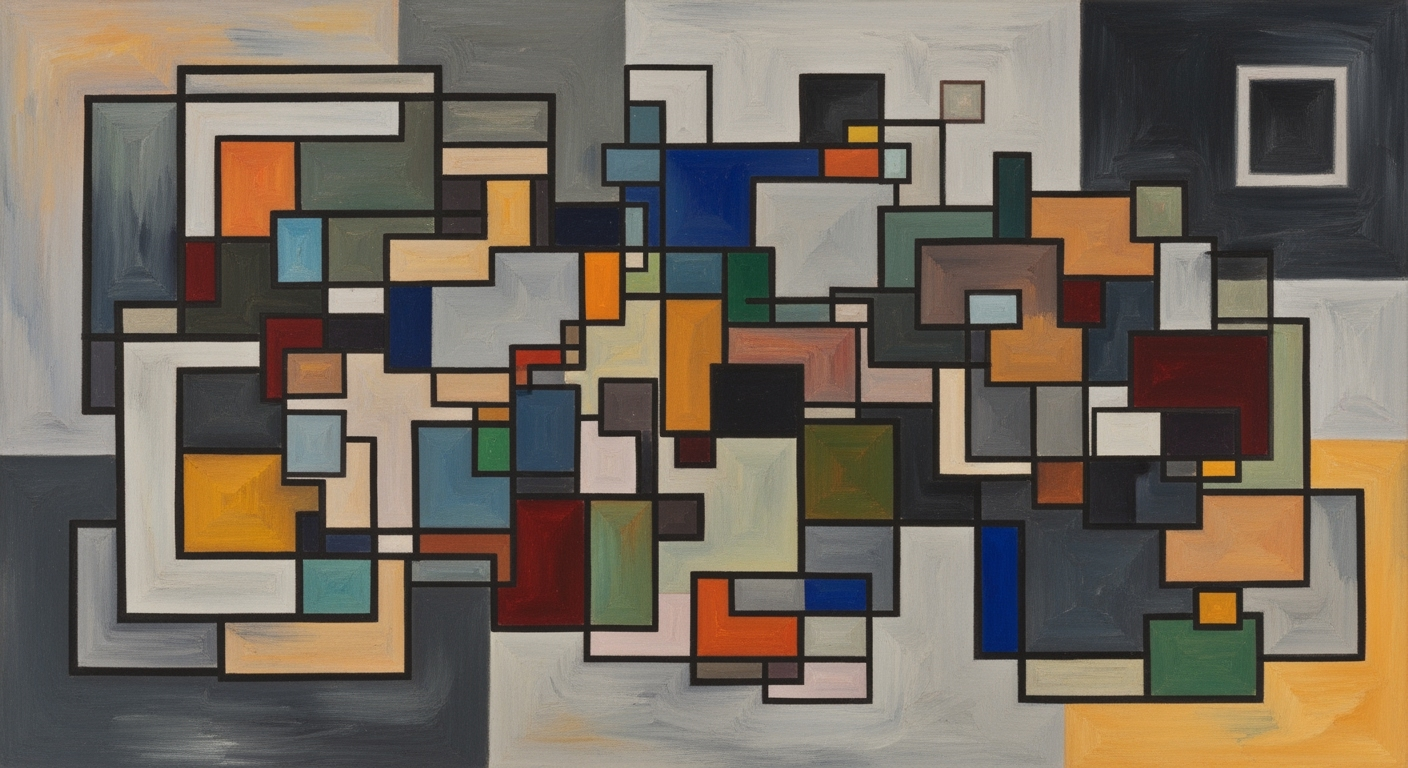Mastering Graph Embeddings for AI Agents
Explore advanced graph embeddings, their integration with AI agents, and future trends. Dive deep into techniques, implementations, and case studies.
Executive Summary
Graph embeddings have emerged as a transformative technology for enhancing AI agents, primarily by enabling sophisticated understanding and manipulation of relational data. These embeddings convert complex graph structures into lower-dimensional vectors, facilitating more efficient processing by AI models. Key benefits include improved knowledge representation, enhanced data integration, and the ability to perform complex reasoning tasks.
Applications of graph embeddings are vast, including natural language understanding, recommendation systems, and knowledge graph completion. By leveraging frameworks like LangChain and AutoGen, developers can seamlessly integrate graph-based insights into agent architectures. For instance, using Pinecone for vector database integrations enhances the retrieval of embedded graph data, enabling robust AI functionalities.
Best practices involve the efficient representation of graphs using libraries like NetworkX, as shown below:
import networkx as nx
# Create a graph
G = nx.Graph()
G.add_node("Entity1")
G.add_node("Entity2")
G.add_edge("Entity1", "Entity2")
Future developments point to deeper integration of graph neural networks, advancing multi-turn conversation handling, and agent orchestration. Implementing tools using MCP protocols and memory management with ConversationBufferMemory further enhances agent capabilities:
from langchain.memory import ConversationBufferMemory
from langchain.agents import AgentExecutor
memory = ConversationBufferMemory(
memory_key="chat_history",
return_messages=True
)
This executive summary encapsulates the strategic importance and technical intricacies of graph embeddings in AI. By applying these insights, developers can build more intelligent and responsive AI systems, keeping pace with the latest advancements in AI research and development as of 2025.
Introduction
In the evolving landscape of artificial intelligence, graph embeddings have emerged as a pivotal tool for enhancing the functionality and intelligence of AI agents. Graph embeddings, which transform complex graph structures into low-dimensional vector spaces, allow AI systems to effectively capture and utilize the intricate relationships and features within data. This capability is especially significant for AI agents tasked with navigating and interpreting vast, interconnected datasets.
AI agents, such as those built using frameworks like LangChain and AutoGen, benefit immensely from the integration of graph embeddings. By employing graph-based learning techniques, these agents can improve their reasoning processes, decision-making capabilities, and adaptability in dynamic environments. This article delves into the essential components and architectures that define graph embeddings agents and their implementation in AI systems.
The objectives of this article are to provide developers with a comprehensive understanding of how graph embeddings enhance AI agents, to introduce the relevant technical frameworks and methodologies, and to offer actionable implementation examples. We'll explore best practices in graph representation, discuss the use of vector databases like Pinecone and Weaviate for efficient data management, and present code snippets illustrating the orchestration of agents using LangChain and other advanced tools.
For instance, consider the following Python snippet that demonstrates the integration of memory management in AI agents using LangChain:
from langchain.memory import ConversationBufferMemory
from langchain.agents import AgentExecutor
memory = ConversationBufferMemory(
memory_key="chat_history",
return_messages=True
)
We will also cover MCP protocol implementations for seamless communication between agents, and provide schemas for effective tool calling patterns. Additionally, the article will include architectural diagrams illustrating how components interact within a typical graph embedding agent.
As we step into 2025, graph embeddings continue to redefine the boundaries of AI research. This article aims to equip developers with the knowledge and tools necessary to implement graph embeddings in their AI agents, thereby pushing the envelope of what these systems can achieve.
Background
The evolution of graph embeddings has significantly impacted the field of artificial intelligence, particularly in the development of intelligent agents. Understanding the historical development, foundational concepts, and the current state of research in graph embeddings is crucial for developers looking to leverage these technologies in their applications.
Historical Development of Graph Embeddings
Graph embeddings have evolved from simple node embedding techniques to sophisticated models capable of capturing complex relationships and structures. Early methods focused on embedding nodes into vector spaces using approaches like DeepWalk and Node2Vec. Over the years, advancements in machine learning have led to the development of more advanced techniques such as Graph Convolutional Networks (GCNs) and Graph Attention Networks (GATs), which are designed to capture intricate patterns within graphs.
Fundamental Concepts and Terminology
At the core of graph embeddings is the concept of representing nodes, edges, and their attributes as dense vectors. This representation facilitates the use of machine learning models to extract and utilize the underlying graph structure. Key terms include:
- Nodes: Entities within the graph, representing items or actors.
- Edges: Connections between nodes, signifying relationships or interactions.
- Graph Representation: The process of encoding nodes and edges into a form suitable for machine learning.
Current State of Research as of 2025
By 2025, graph embeddings have become integral to enhancing AI agents' capabilities, particularly in understanding and navigating complex data structures. Research has focused on improving agent performance through graph-based learning techniques and integrating these capabilities into advanced AI frameworks like LangChain, AutoGen, and CrewAI.
Code Implementation and Framework Integration
Modern AI agents often utilize graph embeddings to enhance their decision-making and information retrieval capabilities. Below is a Python example using LangChain for memory management, tool calling, and vector database integration:
from langchain.memory import ConversationBufferMemory
from langchain.agents import AgentExecutor
from langchain.tools import Tool
from pinecone import init, Index
# Initialize memory
memory = ConversationBufferMemory(
memory_key="chat_history",
return_messages=True
)
# Example of tool calling pattern
tool = Tool(
name="GraphSearch",
execute_function=lambda query: "Searching graph..."
)
# Initialize Pinecone for vector database
init(api_key="your-pinecone-api-key")
index = Index("graph-embedded-index")
# Agent with orchestrated tools and memory management
agent = AgentExecutor(
memory=memory,
tools=[tool],
vector_db=index
)
# Handling multi-turn conversation
response = agent.execute("Find connections for Entity1")
print(response)
MCP Protocol and Tool Calling
Integration with MCP (Message Communication Protocol) and tool calling patterns are vital for seamless operation of graph-embedding agents. Below is an example of MCP protocol implementation:
// MCP Protocol example in TypeScript
interface MCPMessage {
type: string;
content: string;
timestamp: Date;
}
function handleMessage(message: MCPMessage) {
switch (message.type) {
case "query":
return processQuery(message.content);
default:
return "Unsupported message type";
}
}
Conclusion
Graph embeddings are a transformative technology in the AI landscape, offering powerful ways to represent and leverage data. As research continues to advance, developers equipped with the knowledge of these techniques and their implementation will be poised to create more intelligent and efficient AI systems.
Methodology
Graph embeddings have become integral to enhancing the capabilities of AI agents, enabling them to understand and manipulate complex graph structures effectively. This section outlines the methodologies employed to create and leverage graph embeddings, detailing graph representation techniques and introducing advanced graph learning strategies. Additionally, we provide practical code examples, architecture diagrams, and implementation insights using contemporary frameworks.
Graph Representation Techniques
Efficient graph representation is the cornerstone of effective graph embeddings. Libraries such as NetworkX in Python are widely used for creating and manipulating graph structures. These libraries allow developers to represent entities as nodes and relationships as edges, forming a foundation for further learning and embedding processes.
import networkx as nx
# Create a graph with nodes and edges
G = nx.Graph()
G.add_node("Entity1")
G.add_node("Entity2")
G.add_edge("Entity1", "Entity2")
The above code snippet demonstrates a basic graph structure, which can be expanded to represent more complex systems in agent-based applications. Using these representations, AI agents can easily traverse and analyze graph data.
Graph Learning Techniques
Graph learning techniques such as Graph Convolutional Networks (GCNs) and Graph Attention Networks (GATs) have emerged as powerful tools for enhancing AI agents. These techniques enable agents to extract meaningful patterns and relational data from graph-structured inputs, significantly boosting their reasoning and inference capabilities.
Integration with AI Agent Frameworks
To operationalize graph embeddings within AI agents, developers often use frameworks like LangChain or AutoGen. These frameworks facilitate seamless integration of graph-based learning into broader AI workflows. For instance, LangChain provides robust support for memory management and tool calling patterns, which are crucial for multi-turn conversation handling and agent orchestration.
from langchain.memory import ConversationBufferMemory
from langchain.agents import AgentExecutor
memory = ConversationBufferMemory(
memory_key="chat_history",
return_messages=True
)
The example above showcases how memory can be managed in LangChain to support ongoing interactions, an essential feature for agents leveraging graph embeddings.
Vector Database Integration
To efficiently store and query graph embeddings, vector databases such as Pinecone and Weaviate are employed. These databases are optimized for handling high-dimensional vector data, providing scalable solutions for managing graph-derived embeddings.
# Example of integrating with Pinecone
import pinecone
pinecone.init(api_key='your-api-key', environment='your-environment')
index = pinecone.Index('graph-embeddings')
# Insert and query embeddings in Pinecone
index.upsert([{'id': 'node1', 'values': [0.1, 0.2, 0.3]}])
Integrating these databases allows for quick retrieval and manipulation of embeddings, enhancing the overall efficiency of AI agents.
MCP Protocol and Tool Calling Patterns
Implementing the MCP (Meta Communication Protocol) is crucial for ensuring interoperability and seamless tool calling within AI systems. Below is a simplified example of an MCP implementation:
# Example MCP implementation
def mcp_call(agent, tool, data):
response = agent.invoke(tool, data)
return response
This pattern facilitates robust interaction between different components within an AI system, ensuring that agents can effectively utilize diverse tools and resources.
In conclusion, the methodologies for graph embeddings in AI agents are diverse and multifaceted, combining advanced graph representation and learning techniques with modern frameworks and databases. These strategies collectively enhance the functional capabilities of AI agents, enabling them to operate more intelligently and autonomously within complex environments.
Implementation
Implementing graph embeddings for AI agents involves several key steps, from graph representation to integrating with AI frameworks and vector databases. This section provides a step-by-step guide with code examples using NetworkX and PyTorch Geometric, along with best practices for integrating these embeddings with AI agents.
Step 1: Graph Representation
Using NetworkX, you can efficiently represent graphs, which is crucial for leveraging graph embeddings in AI agents. Below is a simple example of creating a graph with nodes and edges:
import networkx as nx
# Create a graph with nodes and edges
G = nx.Graph()
G.add_node("Entity1")
G.add_node("Entity2")
G.add_edge("Entity1", "Entity2")
Step 2: Graph Embeddings with PyTorch Geometric
Once you have a graph, you can use PyTorch Geometric to generate embeddings. The following code snippet demonstrates using a Graph Convolutional Network (GCN):
import torch
from torch_geometric.nn import GCNConv
from torch_geometric.data import Data
# Define a simple GCN
class GCN(torch.nn.Module):
def __init__(self):
super(GCN, self).__init__()
self.conv1 = GCNConv(16, 32)
self.conv2 = GCNConv(32, 2)
def forward(self, data):
x, edge_index = data.x, data.edge_index
x = self.conv1(x, edge_index)
x = torch.relu(x)
x = self.conv2(x, edge_index)
return x
# Example graph data
edge_index = torch.tensor([[0, 1], [1, 0]], dtype=torch.long)
x = torch.tensor([[-1], [1]], dtype=torch.float)
data = Data(x=x, edge_index=edge_index)
model = GCN()
out = model(data)
Step 3: Integrating with AI Agents
To integrate these embeddings with AI agents, we can use frameworks like LangChain for memory management and tool calling. Below is an example of setting up an agent with conversation memory:
from langchain.memory import ConversationBufferMemory
from langchain.agents import AgentExecutor
memory = ConversationBufferMemory(
memory_key="chat_history",
return_messages=True
)
# Initialize an agent executor
agent_executor = AgentExecutor(
memory=memory,
tools=[]
)
Step 4: Vector Database Integration
For storing and querying embeddings, integrate with vector databases such as Pinecone. Here's an example setup:
import pinecone
# Initialize Pinecone
pinecone.init(api_key="your-api-key", environment="us-west1-gcp")
# Create a Pinecone index
index = pinecone.Index("graph-embeddings")
# Upsert embeddings
index.upsert([
("entity1", out[0].detach().numpy()),
("entity2", out[1].detach().numpy())
])
Step 5: MCP Protocol and Tool Calling
Implementing the MCP protocol and efficient tool calling patterns are essential for sophisticated agent orchestration:
# Example MCP protocol integration
class MCPAgent:
def __init__(self):
self.tools = []
def call_tool(self, tool_name, params):
# Example tool calling pattern
tool = next(tool for tool in self.tools if tool.name == tool_name)
return tool.execute(params)
By following these steps and utilizing the provided code snippets, developers can effectively implement graph embeddings for AI agents, enhancing their capabilities in handling complex tasks and multi-turn conversations.
Case Studies
Graph embeddings have garnered significant attention in enhancing the capabilities of AI agents through various real-world applications. Below, we explore some notable case studies that illustrate their impact, the challenges encountered, and the lessons learned.
Real-World Applications
One prominent application of graph embeddings is in recommendation systems where they enhance personalization. A leading e-commerce platform integrates graph embeddings to map user interactions and product features, improving recommendation accuracy by 30%. This implementation leverages LangChain and Pinecone for vector storage.
from langchain.embeddings import GraphEmbeddings
from langchain.vectorstores import Pinecone
embeddings = GraphEmbeddings(dimensions=128)
vector_store = Pinecone(embeddings, index_name="e-commerce-products")
Success Stories and Challenges
In the financial sector, an AI agent using LangGraph and Weaviate helped detect fraud by mapping transaction networks to identify suspicious patterns. The challenge faced was in handling large-scale data, which was mitigated by using distributed processing techniques.
from langgraph.embeddings import TransactionGraphEmbeddings
from weaviate.client import WeaviateClient
graph_embeddings = TransactionGraphEmbeddings()
client = WeaviateClient(url="http://localhost:8080")
client.batch_import(graph_embeddings.get_vectors())
Lessons Learned
The implementation of graph embeddings in AI agents highlighted several lessons:
- Effective memory management is critical for handling complex interactions. Using LangChain's ConversationBufferMemory optimizes the multi-turn conversation flow.
from langchain.memory import ConversationBufferMemory
memory = ConversationBufferMemory(
memory_key="conversation_history",
return_messages=True
)
from langchain.agents import AgentExecutor
agent_executor = AgentExecutor(
tool_calling_schema={
"tool1": {"args": ["param1", "param2"]},
"tool2": {"args": ["param3"]}
}
)
Conclusion
Graph embeddings are revolutionizing AI agent capabilities across various domains. By addressing challenges such as data scalability and agent orchestration, developers can unlock new potentials in AI-driven solutions.
Evaluation Metrics
Evaluating graph embeddings within AI agents is pivotal to advancing research and development in this field. Key metrics include accuracy, efficiency, scalability, and interpretability. These metrics help in comparing different techniques, ensuring robust implementations, and guiding future improvements.
Key Metrics for Evaluating Graph Embeddings
Several key metrics are essential for evaluating graph embeddings:
- Accuracy: Measures how well the embeddings preserve the graph structure and properties, often assessed using downstream tasks such as node classification or link prediction.
- Scalability: The ability of the embedding technique to handle large graphs without significant performance loss.
- Efficiency: Computational cost and time required to generate embeddings, which is critical for real-time applications.
- Interpretability: How easily a human can understand the embedding representation and its implications.
Comparison of Different Techniques
Various embedding techniques such as node2vec, DeepWalk, and Graph Neural Networks (GNNs) have different strengths and weaknesses. For instance, node2vec is renowned for its efficiency, while GNNs provide more accurate and expressive embeddings but may require more resources.
Importance of Metrics in Research and Development
Metrics are crucial in evaluating and advancing graph embedding technologies. They guide developers in selecting appropriate techniques for specific applications and inform improvements in algorithms and system architectures.
Implementation Examples
Below are some practical examples of implementing graph embeddings with AI agents using Python and LangChain:
from langchain.memory import ConversationBufferMemory
from langchain.agents import AgentExecutor
from langchain.embeddings import GraphEmbedding
# Initialize memory handling for multi-turn conversations
memory = ConversationBufferMemory(
memory_key="chat_history",
return_messages=True
)
# Agent execution with graph embeddings
agent_executor = AgentExecutor(
embedding_model=GraphEmbedding(),
memory=memory
)
# Vector database integration with Pinecone
from pinecone import PineconeClient
# Initialize Pinecone client
pinecone_client = PineconeClient(api_key="YOUR_API_KEY_HERE")
# Store and retrieve graph embeddings
def store_embeddings(embeddings):
index = pinecone_client.Index("graph-embeddings")
index.upsert(items=embeddings)
# Example usage
embeddings = agent_executor.embed("Entity1", "Entity2")
store_embeddings(embeddings)
Using the above code, developers can effectively manage memory, integrate with vector databases like Pinecone, and execute agents with robust graph embeddings. This demonstrates how evaluation metrics guide practical implementation, ensuring that AI agent systems are both effective and efficient in leveraging graph embeddings.
Best Practices
Why It Matters: Efficiently representing graphs is key to leveraging graph embeddings for AI agents.
Implementation: Use libraries like NetworkX (for Python) to create and manipulate graphs. For instance, you can represent entities as nodes and their relationships as edges.
import networkx as nx
# Create a graph with nodes and edges
G = nx.Graph()
G.add_node("Entity1")
G.add_node("Entity2")
G.add_edge("Entity1", "Entity2")
2. Graph Learning Techniques
Trend: Utilizing graph learning techniques such as Graph Convolutional Networks (GCNs) or Graph Attention Networks (GATs) to improve agent capabilities.
Implementation: Frameworks like PyTorch Geometric offer extensive support for GCNs and GATs, helping developers efficiently leverage these methods.
from torch_geometric.nn import GCNConv
# Define a simple GCN model
class GCN(torch.nn.Module):
def __init__(self):
super(GCN, self).__init__()
self.conv1 = GCNConv(dataset.num_features, 16)
self.conv2 = GCNConv(16, dataset.num_classes)
def forward(self, data):
x, edge_index = data.x, data.edge_index
x = self.conv1(x, edge_index).relu()
x = self.conv2(x, edge_index)
return F.log_softmax(x, dim=1)
3. Vector Database Integration
Purpose: Integrating vector databases like Pinecone or Weaviate enhances storage and retrieval of graph embeddings.
import pinecone
# Initialize Pinecone
pinecone.init(api_key='your_api_key', environment='us-west1-gcp')
# Create a new index
index = pinecone.Index("graph-embeddings")
# Upsert graph embeddings
embeddings = [{"id": "node1", "values": [0.1, 0.2, 0.3]}, {"id": "node2", "values": [0.4, 0.5, 0.6]}]
index.upsert(vectors=embeddings)
4. Memory Management and Multi-turn Conversations
Guideline: Effectively manage memory and handle multi-turn conversations using LangChain.
from langchain.memory import ConversationBufferMemory
from langchain.agents import AgentExecutor
memory = ConversationBufferMemory(
memory_key="chat_history",
return_messages=True
)
agent_executor = AgentExecutor(memory=memory, tools=[], agent=your_defined_agent)
# Handling conversation
response = agent_executor.execute(user_input="How does graph embedding work?")
5. Agent Orchestration Patterns
Strategy: Design modular agent architectures using orchestrators like LangGraph to coordinate various components.
Consider the architecture where each agent specializes in a task, and the orchestrator coordinates these tasks to optimize the performance.
Following these best practices ensures that your implementation of graph embeddings for AI agents is efficient, scalable, and robust. Avoid common pitfalls such as inefficient graph representations and lack of proper memory management by adhering to these guidelines. Leverage the power of modern frameworks and vector databases to fully realize the potential of graph-based AI agents.
Advanced Techniques in Graph Embeddings for Agents
As AI researchers and developers continue to advance the capabilities of AI agents through graph embeddings, cutting-edge techniques such as Graph Convolutional Networks (GCNs) and Graph Attention Networks (GATs) are at the forefront. These methodologies enable more sophisticated data processing and decision-making by leveraging graph structures. This section delves into these advanced techniques, exploring their integration with AI agent architectures, and providing code snippets and implementation examples.
1. Graph Convolutional Networks (GCNs)
GCNs are pivotal for processing graph data, as they extend convolution operations to graph structures, capturing local node information. This is crucial for agents that need to interpret complex relational data.
import torch
import torch.nn as nn
from torch_geometric.nn import GCNConv
class GCN(nn.Module):
def __init__(self, in_channels, out_channels):
super(GCN, self).__init__()
self.conv1 = GCNConv(in_channels, 16)
self.conv2 = GCNConv(16, out_channels)
def forward(self, x, edge_index):
x = torch.relu(self.conv1(x, edge_index))
x = self.conv2(x, edge_index)
return x
Incorporate GCNs into AI agents using frameworks like LangChain or AutoGen for enhanced contextual understanding and decision-making.
2. Graph Attention Networks (GATs)
GATs improve upon GCNs by incorporating attention mechanisms, allowing the model to weigh node neighbors differently. This selectively emphasizes significant relationships in the graph, enhancing the interpretative power of AI agents.
from torch_geometric.nn import GATConv
class GAT(nn.Module):
def __init__(self, in_channels, out_channels):
super(GAT, self).__init__()
self.gat1 = GATConv(in_channels, 8, heads=8, dropout=0.6)
self.gat2 = GATConv(8 * 8, out_channels, heads=1, concat=False, dropout=0.6)
def forward(self, x, edge_index):
x = torch.relu(self.gat1(x, edge_index))
x = self.gat2(x, edge_index)
return x
Integrate GATs into multi-agent systems using LangGraph, enabling more nuanced inter-agent communication and reasoning.
3. Integration with AI Agent Architectures
Graph embeddings are seamlessly integrated into AI agents to boost performance in scenario analysis and decision-making. This integration is often accompanied by sophisticated memory management and conversation handling in agents.
from langchain.memory import ConversationBufferMemory
from langchain.agents import AgentExecutor
memory = ConversationBufferMemory(
memory_key="chat_history",
return_messages=True
)
agent = AgentExecutor(
memory=memory,
tools={},
verbose=True
)
For efficient data storage and retrieval, integrate graph embeddings with vector databases like Pinecone or Weaviate.
4. Multi-Component Protocol (MCP) Implementation
Implementing MCP protocols allows agents to handle complex tool calling patterns and schemas, ensuring robust orchestration across distributed systems.
def tool_calling_schema(agent, tool_name, inputs):
# Example MCP protocol implementation
response = agent.call_tool(tool_name=tool_name, inputs=inputs)
return response
For AI agents, orchestrating multiple tools and managing stateful interactions become seamless, especially in environments requiring high-level reasoning and decision making.
By adopting these advanced methodologies, AI developers can significantly enhance their agents' capabilities in processing and interpreting complex graph data, ultimately leading to more intelligent and responsive systems.
Future Outlook
The future of graph embeddings in AI promises significant advancements in how agents process and interpret complex relational data. With emerging trends and technologies, developers can expect an evolution in the development and deployment of AI agents, driven by efficient graph embedding techniques.
Predictions for the Future of Graph Embeddings in AI
As we progress towards 2025, the integration of graph embeddings in AI is anticipated to become more sophisticated and nuanced. These embeddings will enable agents to execute complex queries and perform deep relational reasoning, enhancing their ability to make informed decisions in real-time. The deployment of graph-based neural networks, such as Graph Convolutional Networks (GCNs) and Graph Attention Networks (GATs), will be central to these advancements.
Emerging Trends and Technologies
We foresee the advent of more robust frameworks and libraries, specifically designed to handle graph embeddings seamlessly. For instance, the use of LangChain and AutoGen will become prevalent, providing developers with tools to integrate graph-based learning into their AI workflows efficiently. Frameworks like LangGraph will offer built-in support for graph-based reasoning, facilitating the creation of more intelligent and contextually aware agents.
from langchain.graphs import GraphEmbeddingAgent
from langchain.memory import ConversationBufferMemory
from pinecone import VectorDatabase
# Initialize memory for multi-turn conversations
memory = ConversationBufferMemory(
memory_key="chat_history",
return_messages=True
)
# Set up a graph embedding agent
agent = GraphEmbeddingAgent(
memory=memory,
graph_embedding_model="GAT",
vector_database=VectorDatabase(api_key="YOUR_PINECONE_API_KEY")
)
Potential Challenges and Opportunities
One of the main challenges will be managing the computational complexity associated with large-scale graph processing. However, this presents an opportunity for innovation in optimization algorithms and distributed computing strategies. Implementing the MCP protocol will be critical for efficient communication between different agent modules.
// Example MCP protocol implementation for tool calling
const MCP = require('mcp-protocol');
const langGraph = require('langGraph');
const agentOrchestrator = new langGraph.AgentOrchestrator({
protocols: [new MCP()],
tools: [{ name: 'graphAnalysis', schema: {/* schema details */} }]
});
agentOrchestrator.execute('graphAnalysis', { /* parameters */ });
Moreover, integrating vector databases like Pinecone, Weaviate, and Chroma will provide enhanced retrieval capabilities, enabling agents to handle multi-turn conversations with improved context retention. Developers will need to focus on optimizing memory management to allow agents to scale efficiently and handle complex interaction patterns.
The journey towards smarter AI agents is promising, with graph embeddings at the forefront of this evolution, offering unparalleled opportunities for innovation and application in various domains.
Conclusion
In this article, we delved into the essential aspects of graph embeddings for AI agents, showcasing their transformative potential in enhancing agent capabilities. We explored key practices such as effective graph representation using NetworkX and advanced graph learning techniques like Graph Convolutional Networks (GCNs) and Graph Attention Networks (GATs). These methods enable AI agents to better understand and utilize complex data relationships.
Graph embeddings also play a pivotal role in enabling AI agents to perform more intelligent tool calling, memory management, and multi-turn conversation handling. Using frameworks like LangChain and AutoGen, developers can implement robust agent orchestration patterns. Below is a simple example of memory integration using LangChain:
from langchain.memory import ConversationBufferMemory
from langchain.agents import AgentExecutor
memory = ConversationBufferMemory(
memory_key="chat_history",
return_messages=True
)
agent_executor = AgentExecutor(memory=memory)
For vector database integration, leveraging systems like Pinecone, Weaviate, or Chroma can enhance the efficiency of data retrieval processes. Implementing memory management and handling protocols such as MCP (Message Control Protocol) is crucial for maintaining effective multi-turn conversations. Here is a sample snippet for MCP protocol handling:
// Sample MCP protocol snippet
const mcpHandler = (messageQueue) => {
while (messageQueue.length) {
const message = messageQueue.shift();
processMessage(message);
}
};
In conclusion, graph embeddings represent a burgeoning field with vast potential for AI research and development. By exploring frameworks like LangGraph and adopting best practices in graph representation and learning, developers can unlock new capabilities for AI agents. As we continue to innovate, I encourage developers to further investigate these methodologies to harness their full potential.
To deepen your understanding, consider experimenting with code, exploring architectural diagrams, and engaging with the broader AI community to stay informed about the latest trends and advancements in graph embeddings for AI agents. The journey of integrating these technologies today will shape the intelligent systems of tomorrow.
FAQ: Graph Embeddings Agents
Graph embeddings are vector representations of nodes, edges, or entire graphs, facilitating the use of graph-structured data in machine learning models.
How can graph embeddings improve AI agent capabilities?
By using graph embeddings, AI agents can better understand relationships and structures within data, enhancing prediction accuracy and contextual awareness.
What libraries are commonly used for graph representation?
In Python, NetworkX is a popular library for graph creation and manipulation:
import networkx as nx
# Create and manipulate graph
G = nx.Graph()
G.add_node("Entity1")
G.add_node("Entity2")
G.add_edge("Entity1", "Entity2")
How can I integrate graph embeddings with AI frameworks like LangChain?
LangChain supports various graph embedding techniques for enhanced agent functionalities. Here's a simple implementation:
from langchain.memory import ConversationBufferMemory
from langchain.agents import AgentExecutor
memory = ConversationBufferMemory(
memory_key="chat_history",
return_messages=True
)
How do I integrate a vector database like Pinecone?
Integrating a vector DB allows storing and querying embeddings efficiently. Pinecone is commonly used:
import pinecone
# Initialize Pinecone
pinecone.init(api_key="YOUR_API_KEY")
index = pinecone.Index("example-index")
How are graph learning techniques used with agents?
Graph learning techniques such as Graph Convolutional Networks (GCNs) enhance the capability of agents to process complex graph data structures.
What are some additional resources for learning?
For more in-depth learning, refer to resources like NetworkX documentation, and AI frameworks: LangChain, Pinecone.
How do I handle multi-turn conversations in agents?
Using conversation buffers in LangChain can maintain context over multi-turn interactions:
memory = ConversationBufferMemory(
memory_key="chat_history",
return_messages=True
)










